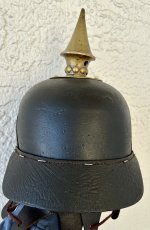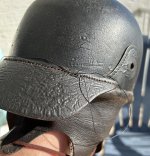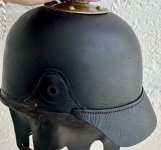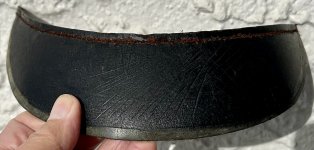Another helmet sent to me for a bit of repair...Saxe M67. This is in excellent shape other than the fact that the stitching on both visors has rotted away. For our new collectors, these older helmets have a higher profile (dome shape) heavier leather construction, bolt on chin scales and a pearl ring around the spike neck. There is also no rear spine on the M67. As pickelhaube design progressed, the helmet height shrank, lighter gauge leather was used, pearl ring removed and M91 side posts were introduced. Some "before photos":
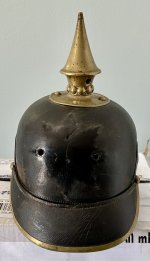 I recommend to most customers that they remove all fittings which can be easily be taken off before mailing the helmet
I recommend to most customers that they remove all fittings which can be easily be taken off before mailing the helmet
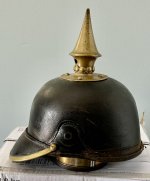
We can see the higher profile here and the hole for the old style bolt on chin scales. Some of these older helmets have had M91 posts put on to upgrade them.
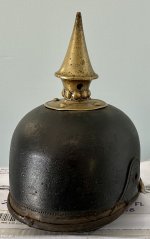
No rear spine on this model.
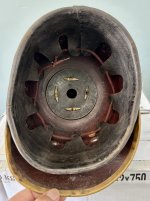
The liner is in awesome shape and I see no evidence of it being a replacement! Note the different spike base split brads. In the Saxe manner the inner side of the visor trim has a manufacturer stamp.....G. F. Damm.
 I recommend to most customers that they remove all fittings which can be easily be taken off before mailing the helmet
I recommend to most customers that they remove all fittings which can be easily be taken off before mailing the helmet
We can see the higher profile here and the hole for the old style bolt on chin scales. Some of these older helmets have had M91 posts put on to upgrade them.

No rear spine on this model.

The liner is in awesome shape and I see no evidence of it being a replacement! Note the different spike base split brads. In the Saxe manner the inner side of the visor trim has a manufacturer stamp.....G. F. Damm.
Last edited:

